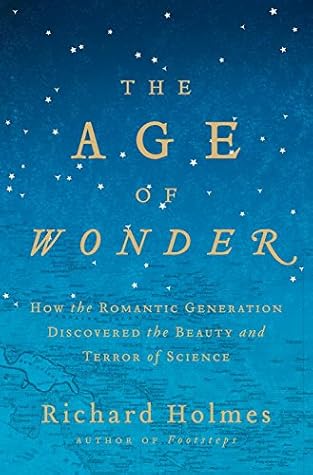More on this book
Community
Kindle Notes & Highlights
Read between
May 20 - August 1, 2019
there is Romantic science in the same sense that there is Romantic poetry, and often for the same enduring reasons.
Romantic science can be dated roughly, and certainly symbolically, between two celebrated voyages of exploration. These were Captain James Cook’s first round-the-world expedition aboard the Endeavour, begun in 1768, and Charles Darwin’s voyage to the Galapagos islands aboard the Beagle, begun in 1831. This is the time I have called the Age of Wonder, and with any luck we have not yet quite outgrown it.
The idea of the exploratory voyage, often lonely and perilous, is in one form or another a central and defining metaphor of Romantic science.
the dazzling idea of the solitary scientific ‘genius’, thirsting and reckless for knowledge, for its own sake and perhaps at any cost.
Closely connected with this is the idea of the ‘Eureka moment’, the intuitive inspired instant of invention or discovery, for which no amount of preparation or preliminary analysis can really prepare. Originally
The notion of an infinite, mysterious Nature, waiting to be discovered or seduced into revealing all her secrets, was widely held.
The ideal of a pure, ‘disinterested’ science, independent of political ideology and even religious doctrine, also began slowly to emerge.
Romantic science, on the other hand, had a new commitment to explain, to educate, to communicate to a general public.
Plato argued that the notion of ‘wonder’ was central to all philosophical thought: ‘In Wonder all Philosophy began: in Wonder it ends…But the first Wonder is the Offspring of Ignorance; the last is the Parent of Adoration.’
This book is centred on two scientific lives, those of the astronomer William Herschel and the chemist Humphry Davy.
Confined to refractors, most eighteenth-century British astronomers had paid little attention to stellar astronomy, except where it served for navigation purposes.
Benjamin Franklin, American Ambassador in Paris, watched the launch through a telescope from the window of his carriage. Afterwards he remarked: ‘Someone asked me — what’s the use of a balloon? I replied – what’s the use of a newborn baby?’
By putting female subjects ‘in a state of gas’, they insidiously ‘gained admittance to their lovely persons’. In a fantasy sequence, the pamphlet describes
Lawrence eventually went on to broaden his attack. Science, he argued, had an autonomous right to express its views fearlessly and objectively, without interference from Church or state. It must avoid ‘clouds of fears and hopes, desires and aversions’. It must ‘discern objects clearly’ and shun ‘intellectual mist’. It must dispel myth and dissipate ‘absurd fables’.19 The world of scientific research was wholly independent.


